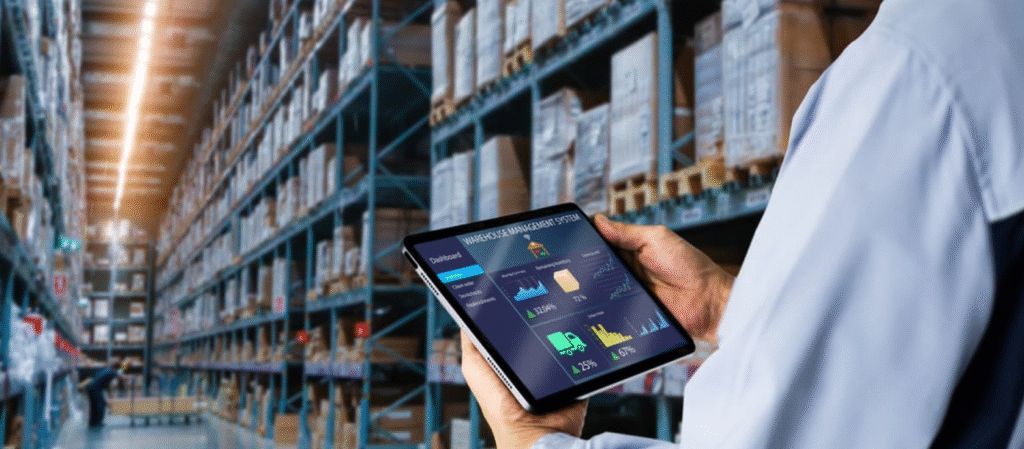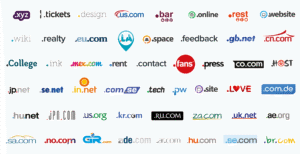
Industry 4.0 Inventory Strategies: Smarter, Faster, and More Profitable

The way businesses manage their inventory is changing fast. Thanks to new technology, companies can now track their products better, predict what customers want, and save money at the same time. This isn’t just about using computers instead of paper – it’s about creating smart systems that can think and make decisions on their own.
In the past, managing inventory meant counting products by hand and using spreadsheets. Today, the best companies use artificial intelligence, smart sensors, and data analysis to create inventory systems that work automatically. This change is helping businesses serve customers better while spending less money on storing products.
How Digital Technology is Changing Stock Management
Old-fashioned inventory management was like driving a car by only looking in the rearview mirror. You could see what happened, but you couldn’t see what was coming next. Now, smart inventory systems are like having GPS navigation – they can predict problems before they happen and suggest the best route forward.
This change is happening because customers want their orders faster than ever before. At the same time, keeping too much inventory in storage costs a lot of money. Companies need systems that are smart enough to have the right products available without wasting space or money.
Modern inventory systems connect with everything – from the factory floor to the customer’s doorstep. All these connections share information that helps companies make better decisions about what to order, when to order it, and where to keep it.
Key Technologies Making Inventory Smarter
Artificial Intelligence and Machine Learning
Think of AI as a super-smart assistant that never gets tired and can process huge amounts of information instantly. These systems learn from past sales data to predict future demand. They can tell you which products will sell well next month, which ones might sit on shelves, and even how weather or holidays might affect sales.
The best part is that these systems get smarter over time. The more data they process, the better they become at making accurate predictions. This helps companies avoid having too much of products nobody wants or running out of popular items.
Smart Sensors and Internet of Things (IoT)
Imagine if every product in your warehouse could tell you where it is, how long it’s been there, and what condition it’s in. That’s what IoT sensors do. These small devices track everything automatically, so you don’t need people walking around with clipboards counting products.
Smart sensors can monitor temperature for food products, track when items move from one location to another, and even alert managers when supplies are running low. This real-time information helps companies make faster, better decisions.
Data Analysis and Prediction
Modern inventory systems don’t just track what happened – they predict what will happen next. These systems look at many different factors like social media trends, economic news, weather forecasts, and even local events to predict how much of each product customers will want.
For example, a system might notice that raincoat sales usually increase two days before bad weather is predicted. It can then automatically order more raincoats before the storm hits, ensuring the store doesn’t run out when customers need them most.
Blockchain for Tracking
Blockchain creates a permanent record of where every product came from and everywhere it went. Think of it like a diary that can never be erased or changed. This is especially useful for food companies that need to quickly find the source of contaminated products or luxury brands that want to prove their products are authentic.
Smart Strategies for Better Inventory Control
Dynamic Adjustment
Old inventory systems used fixed rules – like “always keep 100 units in stock.” New systems are flexible and adjust these numbers based on current conditions. If demand is increasing, the system automatically increases stock levels. If demand slows down, it reduces orders to avoid having too much inventory.
This flexibility can cut storage costs by 30% while making sure products are available when customers want them.
Predicting What Customers Want
Modern systems are getting very good at predicting changes in customer demand. They watch for early warning signs like increased social media mentions, changes in competitor pricing, or shifts in economic conditions.
This early warning system lets companies prepare for changes before they happen. Instead of reacting after sales increase or decrease, companies can adjust their inventory in advance.
Automatic Ordering
Advanced systems can place orders with suppliers automatically. They consider current stock levels, predicted demand, supplier delivery times, and even negotiate better prices based on order history.
These systems work with suppliers to create partnerships where everyone shares information and works together to optimize the entire supply chain, not just individual parts.
Real-Time Visibility
Companies can now see exactly what inventory they have, where it is, and what condition it’s in at any moment. This complete visibility helps make better decisions about moving products between locations or adjusting prices to clear slow-moving items.
How to Implement Smart Inventory Systems
Start Small and Learn
The best way to implement new inventory technology is to start with a small test in one area or with one type of product. This allows companies to learn what works and fix problems before expanding the system company-wide.
Many companies discover that their existing data needs to be cleaned up and organized before new systems can work effectively. Starting small makes this process manageable.
Connect with Existing Systems
New inventory systems need to work with existing business software like accounting systems and customer databases. This connection is often the most challenging part of implementation, but it’s critical for success.
Companies that plan these connections carefully from the beginning have much better results than those that try to add connections later.
Train People and Manage Change
New technology changes how people work, and some employees might be nervous about these changes. Successful companies invest time in training their staff and explaining how new systems will make their jobs easier, not harder.
The best implementations involve employees in designing and testing new systems, ensuring that the technology actually solves real problems rather than creating new ones.
Common Challenges and Solutions
Data Problems
Many companies find that their product information is incomplete or incorrect. Before smart systems can work well, this data needs to be fixed. This might mean updating product descriptions, correcting supplier information, or organizing product categories better.
Companies need to assign someone to be responsible for data quality and create processes to keep information accurate over time.
Old Systems
Most companies have older computer systems that can’t be replaced overnight. The solution is to build bridges between old and new systems, gradually upgrading pieces while keeping everything running.
This takes careful planning but reduces risk and allows companies to spread costs over time.
Security Concerns
Connected inventory systems can create new security risks. Companies need to protect against cyber attacks that could disrupt operations or steal sensitive information.
Good security includes protecting devices, securing network connections, encrypting data, and training employees to recognize security threats.
Employee Resistance
Some employees might resist changes that alter their daily routines or require learning new skills. The key is clear communication about why changes are necessary and comprehensive training to help people succeed with new systems.
Companies that involve employees in the change process and provide ongoing support have much better results.
Real-World Examples
Manufacturing Companies
A car manufacturer created a system that watches parts inventory in real-time and automatically adjusts production schedules to use parts before they become outdated. This reduced inventory costs by 25% while improving production efficiency.
Retail Stores
A clothing retailer implemented a system that tracks inventory across all stores and online in real-time. When someone orders something online, the system can send it from the store that has it in stock, reducing both stockouts and the need to mark down excess inventory.
Hospitals
A hospital system uses smart sensors to track medical supplies automatically. The system reorders supplies based on usage patterns and alerts staff when critical items are running low. This reduced stockouts by 90% while cutting inventory costs by 20%.
Distribution Companies
A logistics company created a system that optimizes where to store products across their warehouse network in real-time. The system considers transportation costs, warehouse space, and customer locations to decide the best place for each product. This cut transportation costs by 15% while improving delivery speed.
Measuring Success
New Ways to Measure Performance
Traditional measures like how fast inventory turns over are still important, but companies now track more sophisticated metrics. They measure how accurately they can predict demand, how effectively they position inventory, and how quickly they can respond to changes.
Real-time dashboards give managers instant visibility into performance, allowing them to spot and fix problems immediately rather than waiting for monthly reports.
Calculating Return on Investment
Measuring the financial benefits of smart inventory systems requires looking at both direct savings (like reduced storage costs) and indirect benefits (like happier customers and reduced risk).
Successful companies track both types of benefits and understand that some advantages might not show up immediately in financial reports but contribute to long-term competitive advantage.
What’s Coming Next
Fully Automatic Systems
The future of inventory management is systems that can manage inventory with very little human help. These systems will make purchasing decisions, optimize warehouse operations, and coordinate with suppliers automatically.
Some companies are already testing these systems. Amazon’s warehouses use robots not just for moving products but also for making inventory decisions.
Environmental Considerations
Companies are increasingly focused on reducing waste and environmental impact. Smart inventory systems can help by optimizing transportation routes, reducing packaging waste, and tracking recyclable materials.
Future systems will optimize for environmental goals alongside financial ones, helping companies meet sustainability targets while saving money.
Edge Computing
As inventory systems become more sophisticated, they need to process information faster. Edge computing brings processing power closer to where data is created, enabling quicker decisions and reducing dependence on internet connections.
This is especially valuable in remote locations where internet connections might be unreliable.
Conclusion: The Smart Inventory Future
The transformation of inventory management through smart technology offers huge opportunities for businesses to serve customers better while reducing costs. But success requires more than just buying new technology – it requires rethinking how inventory management fits into overall business strategy.
Companies need to invest in people and processes as much as in technology. The organizations that successfully combine smart technology with good change management will become the market leaders of the future.
The inventory revolution is happening now. Companies that embrace these changes today will have significant advantages over those that wait. The question isn’t whether to implement smart inventory management, but how quickly you can make the change.
Smart inventory systems are no longer a luxury for large companies – they’re becoming essential for any business that wants to compete effectively. The future belongs to companies that can use technology to be more responsive, more efficient, and more customer-focused than their competitors.
















Post Comment